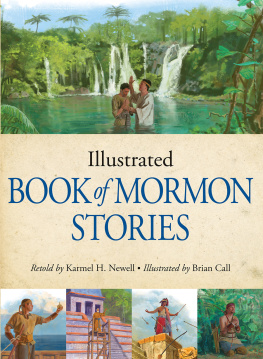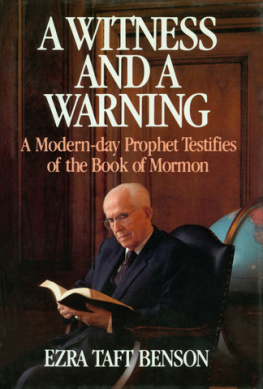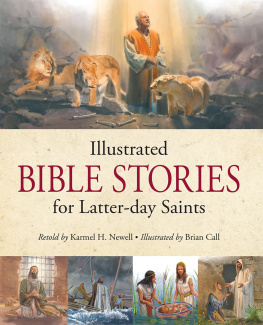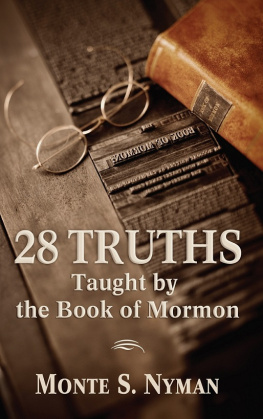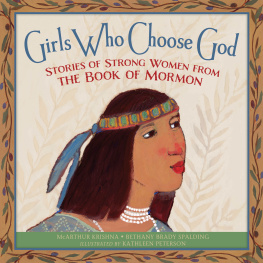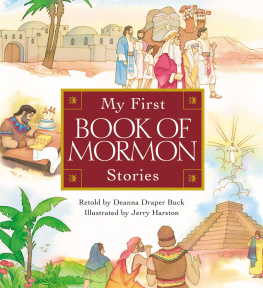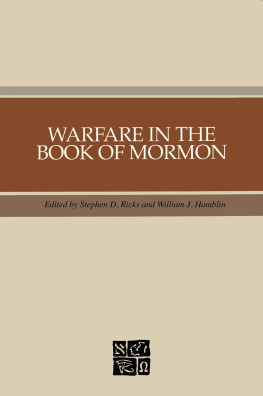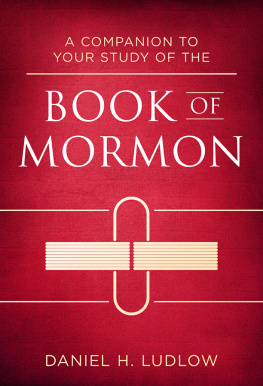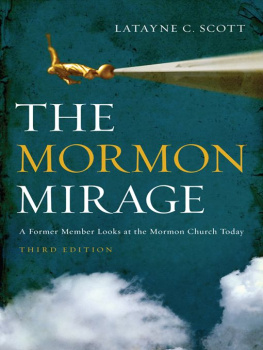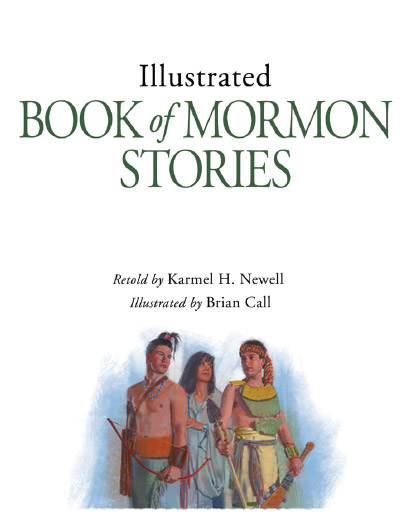2013 Karmel H. Newell, Brian Call.
All rights reserved. No part of this book may be reproduced in any form or by any means without permission in writing from the publisher, Deseret Book Company (permissions@deseretbook.com), P.O. Box 30178, Salt Lake City Utah 84130. This work is not an official publication of The Church of Jesus Christ of Latter-day Saints. The views expressed herein are the responsibility of the author and do not necessarily represent the position of the Church or of Deseret Book. Deseret Book is a registered trademark of Deseret Book Company.
Library of Congress Cataloging-in-Publication Data
Newell, Karmel H., author.
Illustrated Book of Mormon stories / retold by Karmel Newell; illustrated by Brian Call.
pages cm
Includes bibliographical references.
Summary: An illustrated retelling of the stories from the Book of Mormon.
ISBN 978-1-60641-156-8 (hardbound : alk. paper)
[1. Book of Mormon stories.] I. Call, Brian D., illustrator. II. Book of Mormon. III. Title.
BX8627.A2N49 2011
289.3'22dc23 2011019746
Printed in the United States of America
Publishers Printing, Salt Lake City, UT
10 9 8 7 6 5 4 3 2 1
To my children and my childrens children
Karmel H. Newell
To my wonderful wife, Michelle, and my children
Brian Call
How to Use This Book
This book is intended to supplement scripture studynot replace it. The spiritual power that comes from reading the word of God cannot come from any other source than the scriptures. However, spiritual insight and power can flow more freely when readers do not feel confused about peoples, places, and events. As readers (especially young readers) familiarize themselves with scripture stories, the doctrines and truths that those stories illustrate become more accessible to even the youngest reader.
These stories are arranged in the same order in which they appear in the Book of Mormon, but each chapter of this book is self-contained, so children do not need to read the book from beginning to end in order to understand it. Each chapter has sidebars that explain important concepts, introduce essential vocabulary, or offer historical background. The sidebars can be read before, during, or after the body of the story.
The uses for this book are as varied as the families who read it. If, for example, a family conducts scripture study in the morning, this book might serve them well as they read their children a bedtime story. If a family gathers for scripture study at night, this book would be a valuable reference throughout the day, perhaps in a central location, so children can supplement their knowledge on their own. Certainly, this book provides the framework for a series of family home evenings (see page 110). Because the events are retold as stories, this book also lends itself well to discussion and to the bearing of testimony.
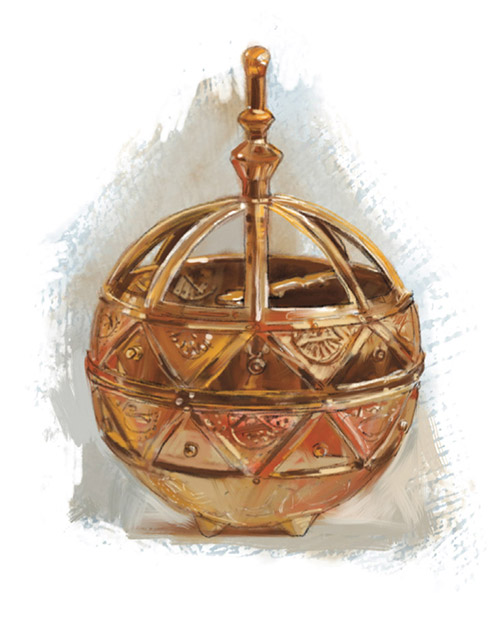
Lehi and His Family Leave Jerusalem
1 Nephi 12
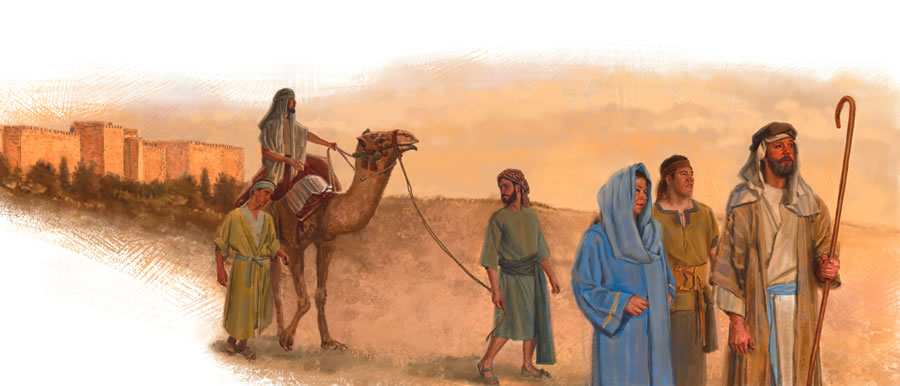
About 600 years before Jesus Christ was born, the prophet Lehi lived in Jerusalem. Along with other prophets, he told the people to repent or their great city would be destroyed. Lehi loved the people and prayed for them with all his heart. One day while he was praying, a pillar of fire appeared on a rock before him, and he had a vision from God. He was so filled with the Spirit of the Lord that he began to tremble.
After this experience, Lehi returned to his home and went to bed. Still overcome by the Spirit, Lehi had another vision. The heavens opened to his view, and he saw God sitting upon His throne, surrounded by many angels who were singing and praising God. In the vision, Lehi saw Jesus Christ and twelve apostles. He was handed a book and told to read it. Lehi read about the coming of Jesus Christ, the Savior of the world. He also read that Jerusalem would be destroyed, many of the people would be killed in war, and many would be held captive because of their wickedness.
Lehi warned the people and pleaded with them to repent, but they did not want to hear what he said. They became angry with him and even tried to kill him.
The prophet had a dream in which the Lord commanded him to take his family and leave Jerusalem. Lehi, his wife, Sariah, and their four sons, Laman, Lemuel, Sam, and Nephi, left their home. They also left their land and their gold, silver, and other precious things and traveled in the wilderness near the shore of the Red Sea. They traveled for three days and then pitched their tent in a valley by a river.
_____________________
The Red Sea
The Red Sea is located between Egypt and Saudi Arabia and is about 180 miles south of Jerusalem. It would take Lehis family between twelve and fourteen days to walk there from Jerusalem. The Red Sea is the body of water that Moses parted so that the Israelites could walk through on dry ground.

_____________________
Lehi built an altar of stones and offered thanks to God. He named the river after Laman and the valley after Lemuel and encouraged his eldest sons to be righteous and faithful. They complained about having to leave their comfortable life behind, but Nephi and Sam did not complain. Nephi prayed for faith. As he prayed, the Lord visited him and softened his heart. Sam listened to Nephi and believed in his words, but Laman and Lemuel did not believe.
_____________________
An Altar
Ever since Adam, prophets offered sacrifices on altars, often made of stones, to show their thanks to God and to prepare the people to receive Gods ultimate sacrifice, His Son Jesus Christ.
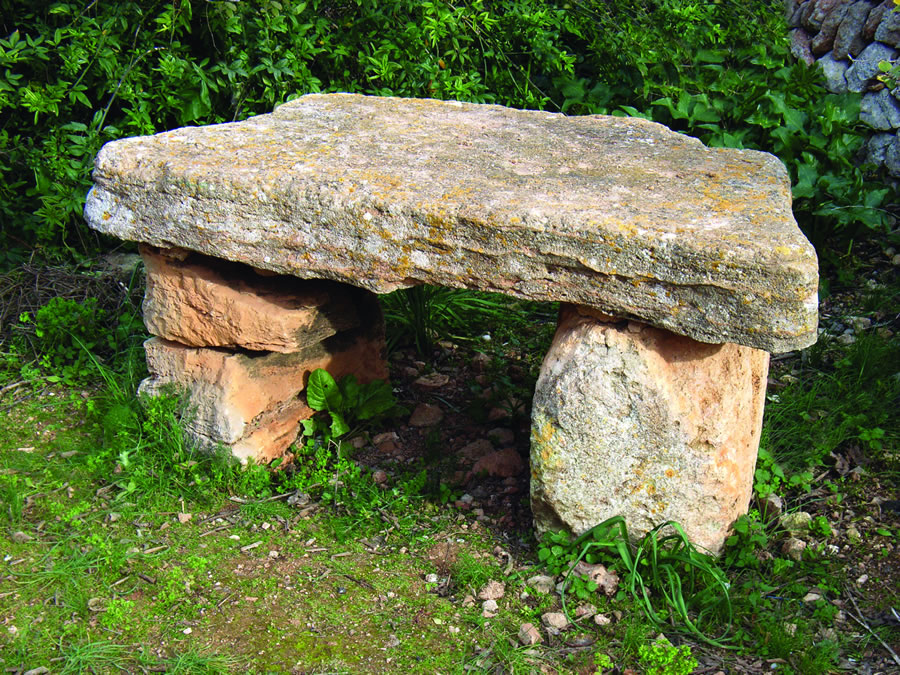
_____________________
Note
Book of Mormon Student Manual, 5.
The Brass Plates
1 Nephi 3
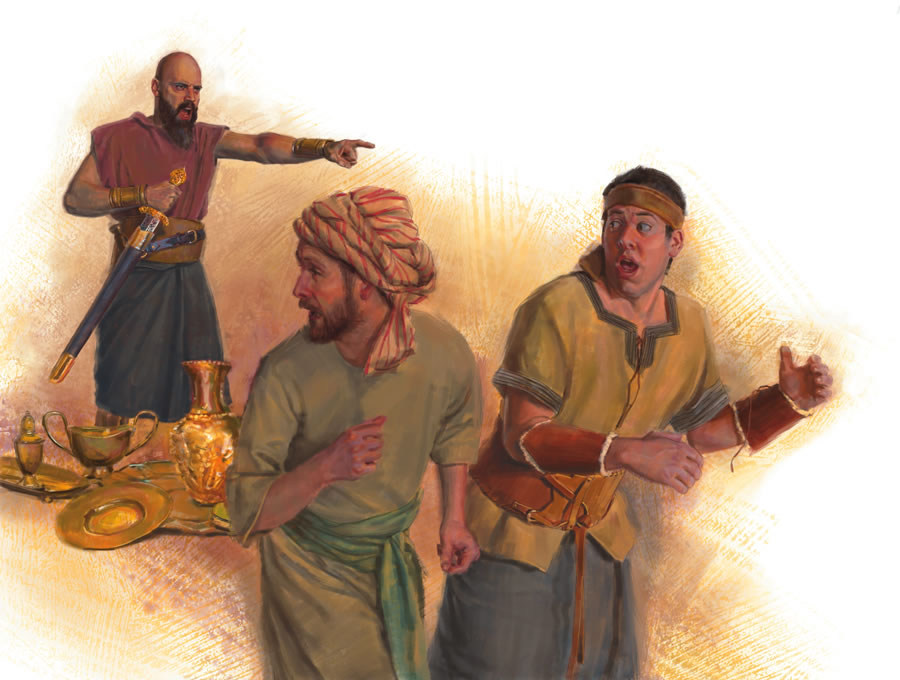
Shortly after his family pitched their tents near the Red Sea, Lehi had another important dream. In the dream, the Lord commanded Lehi to send his sons back to Jerusalem to get the brass plates. The brass plates contained the words of the prophets; they were scriptures. They also included Lehis family history. When Lehi told his sons to get the brass plates, Laman and Lemuel complained about how difficult it would be. But Nephi volunteered, I will go and do the things which the Lord hath commanded, for I know that the Lord giveth no commandments unto the children of men, save he shall prepare a way for them that they may accomplish the thing which he commandeth them (1 Nephi 3:7).
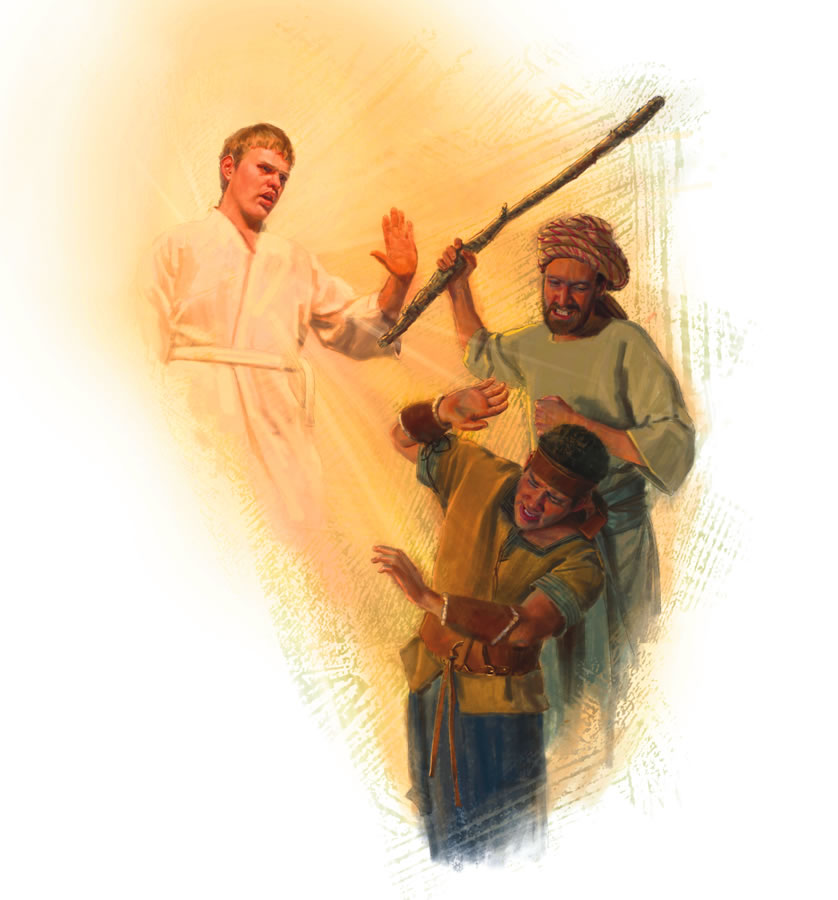
_____________________
Brass Plates
Nephite scriptures included much of the Old Testament in the Bible and other teachings of the prophets. People did not have their own copies of the scriptures in those days, so whole communities and families shared a set of plates that recorded Gods dealings with his people.

